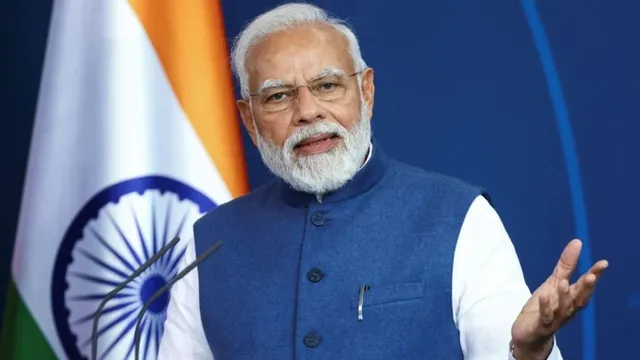- By Narendra Modi
- Tue, 01 Jul 2025 11:06 PM (IST)
- Source:JND
Ten years ago, we embarked on a journey with complete faith into a domain where no one had ventured before. Where for decades it was doubted whether Indians would be able to use technology, we changed that mindset and believed in the ability of Indians to use technology. Where for decades it was assumed that technology would only deepen the divide between the rich and the poor, we eliminated that gap through technology. When intentions are right, innovation empowers the underprivileged. When the approach is inclusive, technology transforms the lives of marginalised people. This belief became the foundation of Digital India. A mission that began to democratise access for all - making it easy, inclusive, building digital infrastructure, and providing opportunities.
In 2014, internet access was limited, digital literacy was low, and access to government services online was extremely limited. Many doubted whether a country as vast and diverse as India could truly become digital. Today, the answer to that question is not in data or dashboards, but in the lives of 1.4 billion Indians. From governance to education, transactions to manufacturing, Digital India is everywhere. In 2014, India had around 250 million internet connections. Today, this number has increased to over 970 million. Over 4.2 million kilometers of optical fiber cable, which is 11 times the distance between the Earth and the Moon, is now connecting even remote villages. India's 5G rollout is among the fastest in the world, with 481,000 base stations established in just two years. High-speed internet has now reached from urban centers to forward military outposts like Galwan, Siachen, and Ladakh.
India Stack, which is our digital backbone, has enabled platforms like UPI, which now handles over 100 billion transactions annually. Nearly half of all real-time digital transactions globally occur in India. Through Direct Benefit Transfer (DBT), more than ₹44 lakh crore has been directly transferred to citizens, eliminating intermediaries and preventing ₹3.48 lakh crore in leakages. Schemes like SVAMITVA have issued over 24 million property cards and mapped 647,000 villages, ending years of land-related uncertainties. India's digital economy is now empowering MSMEs and small entrepreneurs more than ever before. The Open Network for Digital Commerce (ONDC) is a revolutionary platform that connects sellers directly to a vast market of buyers, opening up new opportunities. Government e-Marketplace enables common people to sell goods and services to all government departments. This not only provides citizens access to a huge market but also saves government expenditure.
Imagine applying for a MUDRA loan online. Your creditworthiness is assessed through the Account Aggregator framework. You receive the loan, start your business, register on the Government e-Marketplace, supply to schools and hospitals, and then scale up further through ONDC. ONDC recently crossed the 200 million transaction mark — with the last 100 million in just six months. From Banarasi weavers to Nagaland's bamboo artisans, sellers are now reaching customers across the country without intermediaries. Government e-Marketplace surpassed ₹1 lakh crore in Gross Merchandise Value (GMV) in just 50 days, involving 2.2 million sellers, including over 180,000 women-led MSMEs, who supplied goods worth ₹46,000 crore.
India’s global contribution - India’s Digital Public Infrastructure (DPI) - like Aadhaar, CoWIN, DigiLocker, FASTag, PM-WANI, and One Nation One Subscription - is now being studied and adopted globally. CoWIN enabled the world’s largest vaccination drive, issuing 2.2 billion QR-verified certificates. DigiLocker, with 540 million users, is securely and seamlessly hosting over 7.75 billion documents. During its G20 Presidency, India launched the Global DPI Repository and a $25 million Social Impact Fund, enabling countries in Africa and South Asia to adopt inclusive digital ecosystems.
India is now among the top three startup ecosystems in the world, with over 180,000 startups. But this is not just a startup movement; it is a technology renaissance. India is making great progress in terms of AI skills and AI talent among its youth.
Under the $1.2 billion India AI Mission, India has ensured access to 34,000 GPUs at a price that is among the lowest globally - less than a dollar per GPU hour. This has made India not only the most affordable internet economy but also the most economical computing hub. India has advocated for humanity-first AI. The New Delhi Declaration on AI promotes innovation with responsibility. AI Centers of Excellence are being established across the country.
The next decade will be even more transformative. We are moving beyond digital governance towards global digital leadership. From India First to India for the World, Digital India is no longer just a government program; it has become a mass movement. It is the core of building an Atmanirbhar Bharat and is making India the world’s trusted innovation partner.
To all innovators, entrepreneurs, and dreamers: The world is looking to India for the next digital revolution. Let's create what empowers. Let's find solutions that truly matter. Let's lead with technology that unites, includes, and uplifts.

